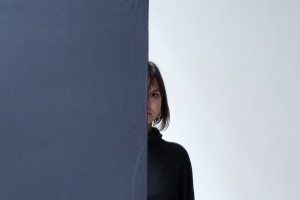Why art in the public space?
Because it has been the right time for a few years now in Romania, like everywhere else in the world, and it needs to be documented, presented, discussed and realized. The critical number of interesting artistic phenomena and urban actions suggest an intense, obvious need to kick-off a discussion from multiple points of view, or at least to display a decentralized diversity of phenomenology and symptoms.
Romanian urban culture reached its first age of adulthood, post-Decembrist and postmodern, and it already has its passionate practitioners, youths especially, its theorist and devoted defenders, professionals or NGO members of all ages and colors, present in everyday reality and in the virtual space of the internet as well.
The Romanian public space – with its difficult post-communist avatars, its provoking history of striving to transform itself into a real political space, its political and commercial abuses that want to disfigure or even cancel it altogether – is starting to be seen as a vital necessity for a public wellbeing that is not just for sociologists, anthropologists, political scientists or intellectuals of any sorts, but also for the schooled urban population, for the often invoked cosmopolitan middles class, and especially for totally urban youths that feel more and more solidary towards the only living environment that they know and in which they grew.
The increased interest for the urban space as a common, maybe even communitarian space, the live taste for more and more diverse types of non-institutional and nonconformist urban culture, the recent passion for present moments and awareness of one’s past, one’s historical patrimony seen as a common good and identity value, all of these constitute evidence in favor of a major shift in personal and collective perspective that can reach even administrative and Romanian political makers.
Public space art is the interface-concept between visual arts, social community, urbanism and political ties. From public art in the classical sense, monumental or decorative, to the perishable art of various dramatic or anniversary public moments, from officially commissioned art to independent, anonymous and temporary artistic intervention that highlights a momentary situation and personalizes, marks spatial and temporal places and city fragments. There is a large pallet of possibilities for creative, engaged or playful intervention that has been easily, imaginatively and powerfully embraced by the Romanian artists (but nameless citizens as well).
Art in urban spaces becomes a more and more visible, assertive and sometimes invasive presence. It is an anthropologic, aesthetic and social phenomenon that says so much about the world we live in – a world where previous meanings of participative democratic ideas, artistically engaged ideas, politically negotiated ideas, public and private relationship ideas and communicative ideas change dramatically.
This issue of ARTA is about strategies for infiltrating and deconstructing the urban semantic jungle; about ways of provoking and disproving the official visual monopoly, be it related to the media or the commerce of the post-communist-neo-liberal world we live in; about deliberate or impulsive, systematic or spontaneous forms that art in the urban space takes; about the way it is inventing a new kind of (independent) politics of seeing and creating a new playground for action between the individual and the collective, between social and political; about its incredible wealth and diversity, but also about its dilemmas and deviations. This issue starts a debate that is more than needed.
Magda Cârneci, Editor-in-chief
POSTED BY
Cristina Bogdan
Founder and editor-in-chief, between 2014-19, of the online edition of Revista ARTA. Co-founder of East Art Mags, a network of contemporary art magazines from eastern and Central Europe. Runs ODD, a s...
www.evenweb.org